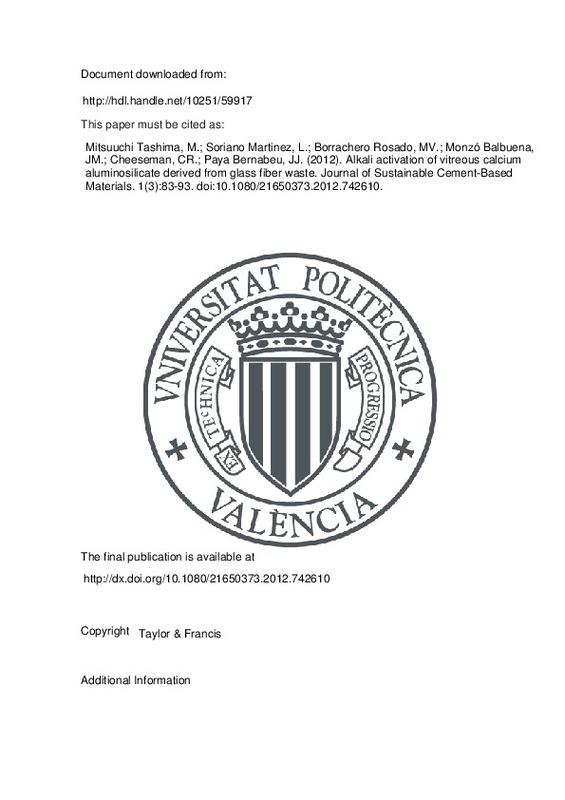Mahasenan N, Smith S, Humphreys K. The cement industry and global climate change: current and potential future cement industry CO2emissions. Greenhouse Gas Control Technologies – 6th International Conference. Oxford: Pergamon; 2003. p. 995–1000.
Schneider, M., Romer, M., Tschudin, M., & Bolio, H. (2011). Sustainable cement production—present and future. Cement and Concrete Research, 41(7), 642-650. doi:10.1016/j.cemconres.2011.03.019
WBCSD – World Business Council for Sustainable Development. Cement industry energy and CO2performance – Getting numbers right. Edited by WBCSD, Geneva-Switzerland (ISBN 978-3-940388-48-3). 2009.
[+]
Mahasenan N, Smith S, Humphreys K. The cement industry and global climate change: current and potential future cement industry CO2emissions. Greenhouse Gas Control Technologies – 6th International Conference. Oxford: Pergamon; 2003. p. 995–1000.
Schneider, M., Romer, M., Tschudin, M., & Bolio, H. (2011). Sustainable cement production—present and future. Cement and Concrete Research, 41(7), 642-650. doi:10.1016/j.cemconres.2011.03.019
WBCSD – World Business Council for Sustainable Development. Cement industry energy and CO2performance – Getting numbers right. Edited by WBCSD, Geneva-Switzerland (ISBN 978-3-940388-48-3). 2009.
Shi, C., Jiménez, A. F., & Palomo, A. (2011). New cements for the 21st century: The pursuit of an alternative to Portland cement. Cement and Concrete Research, 41(7), 750-763. doi:10.1016/j.cemconres.2011.03.016
Duxson, P., Fernández-Jiménez, A., Provis, J. L., Lukey, G. C., Palomo, A., & van Deventer, J. S. J. (2006). Geopolymer technology: the current state of the art. Journal of Materials Science, 42(9), 2917-2933. doi:10.1007/s10853-006-0637-z
Fernández-Jiménez, A., Palomo, A., & Criado, M. (2005). Microstructure development of alkali-activated fly ash cement: a descriptive model. Cement and Concrete Research, 35(6), 1204-1209. doi:10.1016/j.cemconres.2004.08.021
Hossain, A. B., Shirazi, S. A., Persun, J., & Neithalath, N. (2008). Properties of Concrete Containing Vitreous Calcium Aluminosilicate Pozzolan. Transportation Research Record: Journal of the Transportation Research Board, 2070(1), 32-38. doi:10.3141/2070-05
Neithalath, N., Persun, J., & Hossain, A. (2009). Hydration in high-performance cementitious systems containing vitreous calcium aluminosilicate or silica fume. Cement and Concrete Research, 39(6), 473-481. doi:10.1016/j.cemconres.2009.03.006
Tashima MM, Soriano L, Borrachero MV, Monzó J, Payá J. Effect of curing time on the microstructure and mechanical strength development of alkali activated nbinders based on vitreous calcium aluminosilicate (VCAS). Bull. Mater. Sci. in press.
Hemmings RT, Nelson RD, Graves PL, Cornelius BJ. White pozzolan composition and blended cements containing same. Patent US6776838. 2004.
Provis, J. L., Lukey, G. C., & van Deventer, J. S. J. (2005). Do Geopolymers Actually Contain Nanocrystalline Zeolites? A Reexamination of Existing Results. Chemistry of Materials, 17(12), 3075-3085. doi:10.1021/cm050230i
Criado, M., Fernández-Jiménez, A., de la Torre, A. G., Aranda, M. A. G., & Palomo, A. (2007). An XRD study of the effect of the SiO2/Na2O ratio on the alkali activation of fly ash. Cement and Concrete Research, 37(5), 671-679. doi:10.1016/j.cemconres.2007.01.013
Rees, C. A., Provis, J. L., Lukey, G. C., & van Deventer, J. S. J. (2007). In Situ ATR-FTIR Study of the Early Stages of Fly Ash Geopolymer Gel Formation. Langmuir, 23(17), 9076-9082. doi:10.1021/la701185g
Lee, W. K. W., & van Deventer, J. S. J. (2003). Use of Infrared Spectroscopy to Study Geopolymerization of Heterogeneous Amorphous Aluminosilicates. Langmuir, 19(21), 8726-8734. doi:10.1021/la026127e
García-Lodeiro, I., Fernández-Jiménez, A., Blanco, M. T., & Palomo, A. (2007). FTIR study of the sol–gel synthesis of cementitious gels: C–S–H and N–A–S–H. Journal of Sol-Gel Science and Technology, 45(1), 63-72. doi:10.1007/s10971-007-1643-6
Barbosa VFF. Sintese e caracterização de polissialatos (Synthesis and characterization of polysialates) [PhD thesis] (in Portuguese). Instituto Militar de Engenharia. Rio de Janeiro - Brazil. 190 p. 1999.
Bernal, S. A., Rodríguez, E. D., Mejía de Gutiérrez, R., Gordillo, M., & Provis, J. L. (2011). Mechanical and thermal characterisation of geopolymers based on silicate-activated metakaolin/slag blends. Journal of Materials Science, 46(16), 5477-5486. doi:10.1007/s10853-011-5490-z
Boccaccini, A. R., Bücker, M., Bossert, J., & Marszalek, K. (1997). Glass matrix composites from coal flyash and waste glass. Waste Management, 17(1), 39-45. doi:10.1016/s0956-053x(97)00035-4
Kourti, I., Rani, D. A., Deegan, D., Boccaccini, A. R., & Cheeseman, C. R. (2010). Production of geopolymers using glass produced from DC plasma treatment of air pollution control (APC) residues. Journal of Hazardous Materials, 176(1-3), 704-709. doi:10.1016/j.jhazmat.2009.11.089
Lampris, C., Lupo, R., & Cheeseman, C. R. (2009). Geopolymerisation of silt generated from construction and demolition waste washing plants. Waste Management, 29(1), 368-373. doi:10.1016/j.wasman.2008.04.007
Wu, H.-C., & Sun, P. (2007). New building materials from fly ash-based lightweight inorganic polymer. Construction and Building Materials, 21(1), 211-217. doi:10.1016/j.conbuildmat.2005.06.052
Kourti, I., Amutha Rani, D., Boccaccini, A. R., & Cheeseman, C. R. (2011). Geopolymers from DC Plasma–Treated Air Pollution Control Residues, Metakaolin, and Granulated Blast Furnace Slag. Journal of Materials in Civil Engineering, 23(6), 735-740. doi:10.1061/(asce)mt.1943-5533.0000170
[-]







![[Cerrado]](/themes/UPV/images/candado.png)


